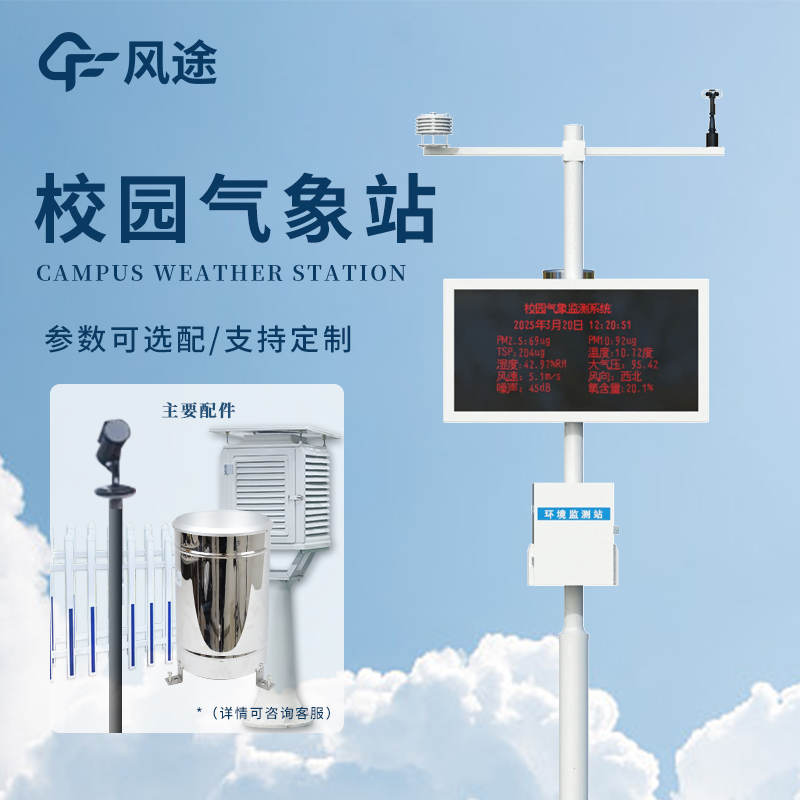Meteorological environment monitoring equipment supplier
Insist on doing high-precision customer favorite technology products
In a corner of the campus, the school's Campus Weather Station stands quietly, equipped with professional meteorological devices such as a Stevenson screen, wind vane, and rain gauge. These devices are no longer just illustrations or written descriptions in textbooks but tangible objects that students can touch and operate, making "meteorology" more concrete and perceptible.
Every morning, students from the meteorological club come to the observation station to start the day's meteorological observation work. They open the Stevenson screen to read the data from the thermohygrometer and record the day's temperature and humidity; they observe the wind vane to determine wind direction; and they use a rain gauge cup to measure rainfall and calculate precipitation. These seemingly simple operations actually involve rigorous scientific procedures. Students need to follow standardized protocols strictly to ensure the accuracy of the data. Through hands-on operation, they gain an intuitive understanding of abstract concepts in textbooks such as "temperature," "wind direction," and "precipitation," and understand the process of acquiring meteorological data.
The school also closely integrates meteorological observations with curriculum teaching. In science classes, teachers lead students to analyze the data accumulated by the observation station, draw temperature change curves and precipitation bar charts, and explore the laws of meteorological changes. Students learn to use mathematical knowledge to process data and use scientific thinking to explain meteorological phenomena in practice. The school regularly holds meteorological knowledge lectures and science popularization activities, inviting meteorological experts to explain the formation and evolution of weather systems by incorporating data from the observation station.
The Campus Weather Station is not only a place to learn knowledge but also a platform to cultivate students' scientific literacy. Through long-term observation, students have developed a rigorous scientific attitude and improved their hands-on practical ability and data analysis ability. Here, abstract meteorological knowledge is transformed into real data and intuitive experiences, making meteorological learning vivid, interesting, and tangible.
